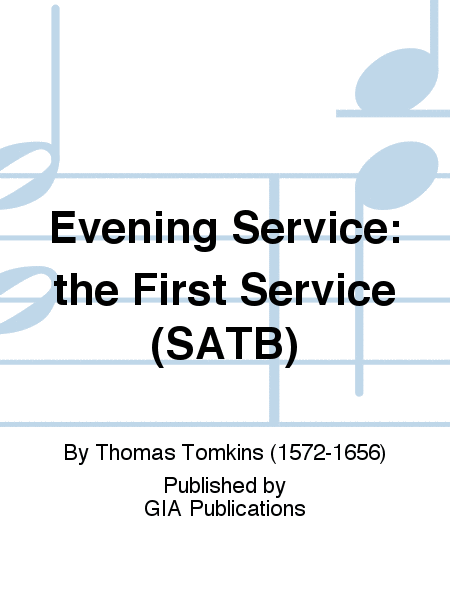Evening Service: the First Service (SATB)
-
Ships in 1 to 2 weeks
Details
Description
SKU: GI.G-RCP57
Composed by Thomas Tomkins. Classical. 20 pages. GIA Publications #RCP57. Published by GIA Publications (GI.G-RCP57).Edited by Edward Tambling Thomas Tomkins wrote no fewer than seven services: three full and four verse settings. The first two full services, as numbered in the posthumous publication of ‘Musica Deo Sacra’ (1668), are straightforward settings in the central Elizabethan style. The First Service is in the major mode, and the Second Service in the minor: the Third Service is a radical departure in style from these settings and is presented as a ‘Great Service’ in homage to Tomkins’ ‘ancient and much reverenced master, William Byrd’. The Fourth and Fifth are verse services, and a further two are present only in manuscript sources: the Sixth Service received its first modern publication in this series (CP17), edited and reconstructed by Peter James. The Seventh to date is unpublished, and survives only in the form of an organ part, the vocal parts having been lost to history. This numbering system of one to seven is misleading, however, as it confuses the chronology of the compositions: some attempt to clarify this ordering is given in a table at the end of this edition in order to address this matter. Tomkins’ relatively late death places him well into the seventeenth century, at a time when musical fashions were changing and the Civil War was altering the course of British History. However, it is correct to describe him as ‘the last Elizabethan’, as his style remained conservative, as did the genres with which he worked and cultivated. ‘Musica Deo Sacra’ is supposed to have been supervised by his son Nathaniel, and collates much of Tomkins’ music not found in other sources. As such, it is a valuable resource for the material it contains, and is also a landmark in music publishing, in that it presents the first known printed organ book set in moveable type on two staves, an unrewarding process which seems to have caused considerable trouble for its printer, William Godbid. Even John Barnard in preparing his ‘First of Selected Church Musick’ (1641) did not go to the trouble of printing an organ part to supplement his vocal partbooks, instead providing his customers with a blank manuscript book into which the already ubiquitous organ parts could be copied by hand. As a result, Tomkins’ source as a whole contains a number of errors, but all of which can be corrected without distortion to the musical text, and the composer’s intention can be realised without too much difficulty. In addition to the note on the ordering of the various services by Tomkins, I have endeavoured to give some brief information concerning the pitch of church music of this period with regards to the organ part, a subject much misunderstood and obfuscated by variously contradictory information. It is hoped that this new edition of Tomkins’ First Evening Service will fill a need for short, attractive settings of the canticles for Evensong, furthering an appreciation of the music of the last great composer of the Renaissance era in Britain.

 Share
Share